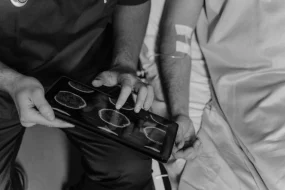
Comparative analysis by Polish researchers assessed the possibility of continuous monitoring through ICP pulse shape and changes in cerebral arterial blood volume
A team of seven researchers from Wrocław University of Science and Technology (Poland), Warsaw University of Technology (Poland), Cambridge University (England) and Jules Verne University (France) has compared three methods of measuring intracranial compliance. The methods which are based respectively on estimates of changes in cerebral arterial blood volume at each cardiac cycle and the relationship between P1 and P2 peaks in the intracranial pressure (ICP) waveform have been validated by producing results similar to the gold standard, which is based on dynamics of the cerebrospinal fluid (CSF).
As pointed out in the paper resulting from the research, intracranial compliance is a vital sign still seldom used in clinical practice that indicates the capacity of the skull to accommodate changes in the volume of its components – brain, blood and CSF. Impaired compliance may lead to increased intracranial pressure, which in turn can lead to strokes, which pose great risks to patients’ lives.
One of the potentials identified by the research was the possibility of carrying out continuous monitoring of intracranial compliance, especially through the method based on the ICP pulse shape, which has fewer practical limitations. This method is based on the ratio between the first two pulse peaks (P1 and P2), which are related to the cardiac cycle. Continuous monitoring is not possible when using the current gold standard, based on a single measurement, and which requires invasive methods.
The study performed a retrospective analysis using data from 36 patients at Addenbrooke Hospital in Cambridge (England), hospitalized between 1993 and 1998 who underwent CSF infusion tests and who had their ICP and cerebral blood flow velocity simultaneously recorded. Data were analyzed using the ICM+ software and dedicated programs built by the team in Python 3.8 language, from which it was possible to gather data related to the three methods of measuring intracranial compliance.
The article “Compliance of the cerebrospinal space: comparison of three methods”, which presents the results of the comparative analysis, was published on April 14, 2021 in the journal Acta Neurochirurgica and can be accessed at DOI: 10.1007/s00701-021-04834-y.





